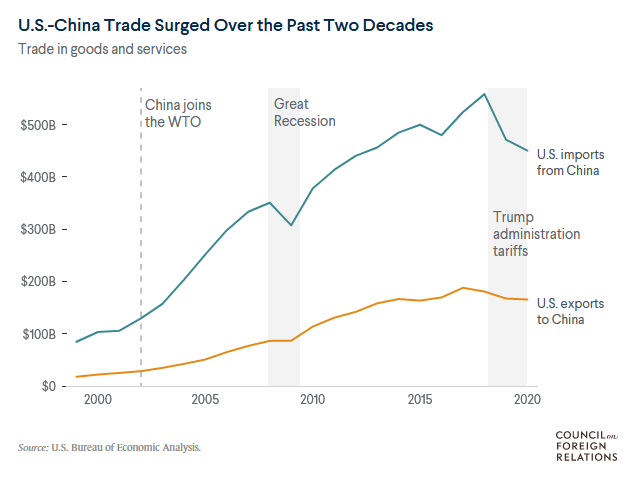The Eagle Takes a Bite Out of the Dragon
Turbo-America aiming to strangle China's advanced tech sector
Chimerica is dead and buried, with Turbo-America delivering the coup de grâce last week by way of imposing export controls (read: sanctions) to purposely make it incredibly difficult for China to import or manufacture advanced computer chips, harming both Beijing’s advanced military tech development efforts and its Artificial Intelligence (AI) sector.
When I wrote Turbo-America back in April, I wondered out loud:
As mentioned above, the USA does very little trade with Russia, but its trade with China is monstrous. It’s one thing to sanction the Russians as any costs can be put onto the Europeans who wouldn’t dare to complain, but to sanction China is a trickier prospect by exponential amounts. How can you effectively sanction them without committing economic suicide?
I am certain that US policy planners in the Treasury Department have been thinking up ways to make this work, and their confident threats to sanction Beijing tell me that they have thought it through.
We now have the answer to that question thanks to this new round of US sanctions leveled at China.
In May of this year, I wrote a piece entitled ‘Hubris’ and used that word describe the USA’s actions at present:
Hubris is the present condition of the USA on the global stage. This is best exemplified by two current facts:
the USA seeks to confront and reduce the power of both Russia and China simultaneously to preserve its own hegemony
the USA is doing absolutely nothing to pit these two targets against one another in order to engage in the tried and tested strategy of divide et impera (divide and conquer)
This unwillingness to turn China against Russia and vice versa and instead pushing the two together in an anti-American alliance shows us that the USA is so utterly confident in its own ability to shape the world in its desired image that such logical and historically successful strategies as divide and conquer don’t even enter into their own calculations. They will take on both, and even incentivize both of them to work together to try and stop them in their ambitions.
For the past decade, I’ve tortured myself in trying to figure out whether the USA would take on Russia or China first. The thought of them moving against both at the same time occupied a large part of my thinking, but it simply seems to fantastical to happen. Yet here we are.
Here we are.
The USA is bleeding Russia out in Ukraine as best it can. The CIA is having too much fun destabilizing Iran. And now the Americans are applying pressure to a choke point in order to strangle China’s advanced tech sector. Three revisionist powers are being confronted and squeezed simultaneously in three different ways.
This essay isn’t going to concern itself with assigning right/wrong or good/evil. The purpose of this piece is to inform readers of what has just happened, and to put it into the larger context pertaining to what the USA is trying to achieve. Iran is a simple case: the USA wants to install a friendly regime in Tehran. Russia is to be separated from Europe (mission accomplished) and its military bled as much as possible so as to reduce the country to little more than a regional power.
China is an entirely different beast altogether. Forcible regime change is not in the cards, and a military confrontation to wound it would result in MAD (Mutually Assured Destruction) of each other’s economies, taking the rest of the world down with it. Unlike with Russia or Iran, the USA is economically intertwined with China, making ‘economic decoupling’ all but impossible for years to come.
US foreign policy planners view China as a systemic rival, one that has “the intention and, increasingly, the capacity to reshape the international order in favor of one that tilts the global playing field to its benefit.” as per the National Security Strategy released last week.
Brad Glosserman views this as a significant shift from before:
Previously, the US, along with allies and partners, focused on preventing China from acquiring technology that would improve its military capabilities. The ambition is now much grander: The goal is to constrain the development of China’s high-tech economy, to thwart its rise as a challenger to US (and Western) technological supremacy.
The stakes are now much, much higher, and the USA has identified a weak point in China’s military and tech strategies in the form of the semiconductor industry.






